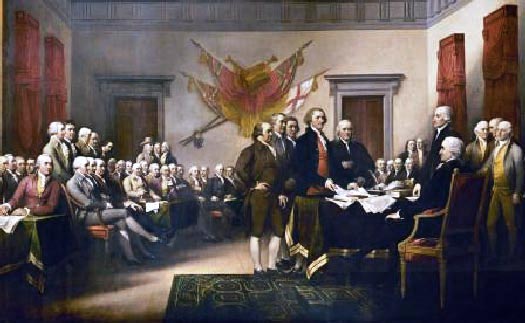History of the 13 Colonies and the laws & taxes that sparked rebellion against the British The definition and purpose of the 1732 Hat Act and the cry of "No taxation without representation!" Definition of the Hat Act
The Meaning and Definition of the Hat Act: The Hat Act of 1732 was a British Law passed by the Parliament of Great Britain that was designed to control hat production by the American colonists in the 13 Colonies. The British wanted to restrict the manufacture and export of hats in the colonies because the colonial hat makers were in competition with the English hat makers. The Hat Act also restricted the number of workers that could be hired, limiting the number of apprentices and forbidding the use of black slaves in the trade. Purpose of the Hat Act
The Purpose of the Hat Act of 1732 was to: - Restrict the manufacture and export of hats in the colonies
- Reduce the number of people in the colonies employed in the hat trade
- Prohibit the inter-colonial sale of finished hats
- Increase the sales and profits of hat makers in England
| | 
Map of the Thirteen Colonies |
Hat Act - British Laws and Taxes
Discover interesting facts and information about the Taxes in the 13 Colonies, including the Hat Act, which was imposed on the colonists of Colonial America by the British government via parliament. The Hat Act was one of a series of taxes that divided Great Britain and its colonies in America. The role of the legal systems and courts in the colonies included enforcing the laws of Great Britain. The Hat Act and the Fur Trade
The fur trade was highly lucrative and the French and English had fought to monopolize the fur trade during the Beaver Wars. Beaver skins or pelts was the raw material used to make a good quality felt used in hat making. Beaver hats were a status symbol for position and wealth in the 1600 and 1700's. The sales of hats made from beaver skins were an extremely important source of income to the British nation. From 1700 to 1770 the beaver skins that were exported from the American colonies to Great Britain were used to make 21 million hats which the British exported from England to other parts of Europe. Beaver skins were the first great American trade commodity. 
| Examples of the hats produced from beaver pelts |  | D'Orsay
Beaver Hat | Continental
Beaver Hat |
Mercantilism and the Hat Act
The Hat Act was part of the policy of Mercantilism that favored England in which the raw materials from the colonies, in this case beaver fur and pelts, were used to make different products in England - finished goods had a higher value than the raw materials. Triangular Trade and the Hat Act
The establishment of the 13 Colonies, with their surplus of raw materials, made it possible for Great Britain to engage in highly lucrative trading via the Triangular Trade routes across the Atlantic. Beaver pelts were the raw materials provided by the colonies were sent to England and manufactured as hats. Effect of the Hat Act of 1732
The effect of the Act was to enable English hatters and milliners to dominate markets formerly supplied by New England and New York manufacturers. The Colonists Reaction to the Hat Act of 1732
The English policy of Salutary Neglect that was in effect from 1607-1763 encouraged the colonists to violate the law by bribing customs officials and smuggling. The colonists were undergoing a period of financial difficulties and their resentment was due to both the economic impact of the Hat Act as well as the constitutional issue of taxation without representation. The Hat Act of 1732 was seen as detrimental to Colonial America and was one of the laws that sewed the seeds of dissension and rebellion in the colonies when it was more rigorously enforced in 1763. The Hat Act was one of the laws that led to anger, resentment, dissension and ultimately revolution in Colonial America - the American Revolutionary War (1775–1783) and the Declaration of Independence from Great Britain. 
British Laws and Taxes in the Colonies - The Declaration of Independence Hat ActMeaning and Definition of the Hat Act History of the Hat Act of 1732 Fast Facts and info about Hat Act timeline The Hat Act article is a great history resource for kids Social Studies Homework help for kids on the Hat Act of 1732
|